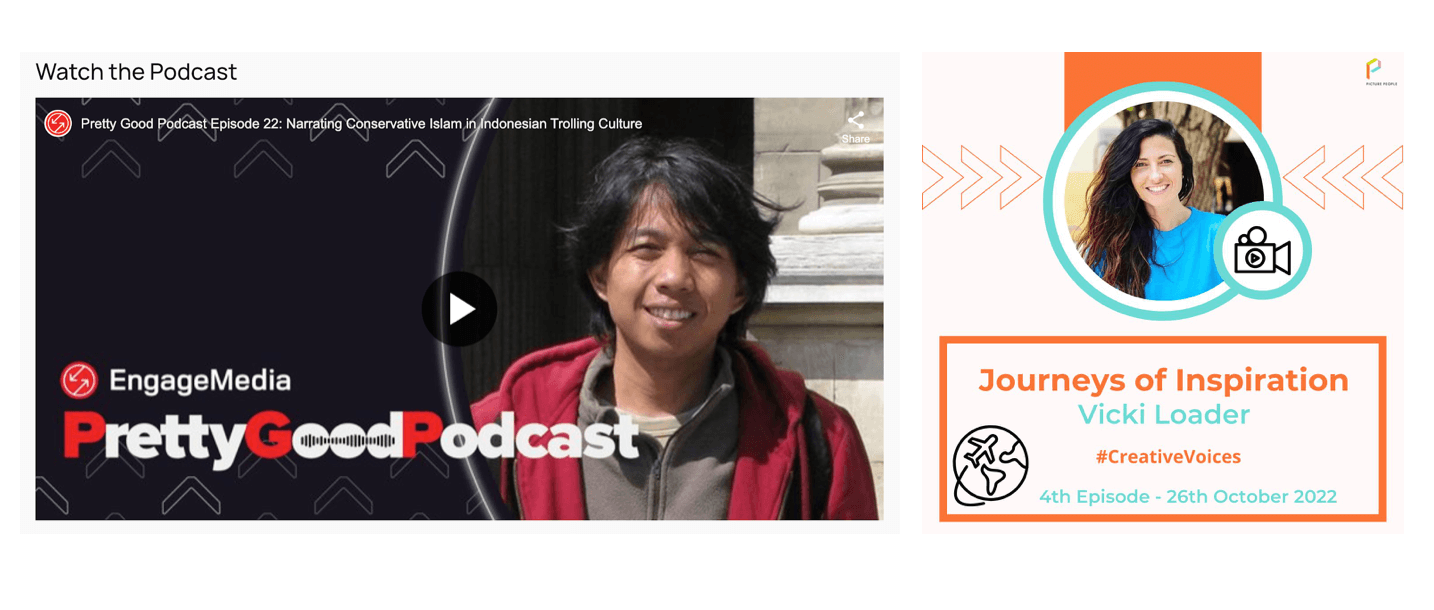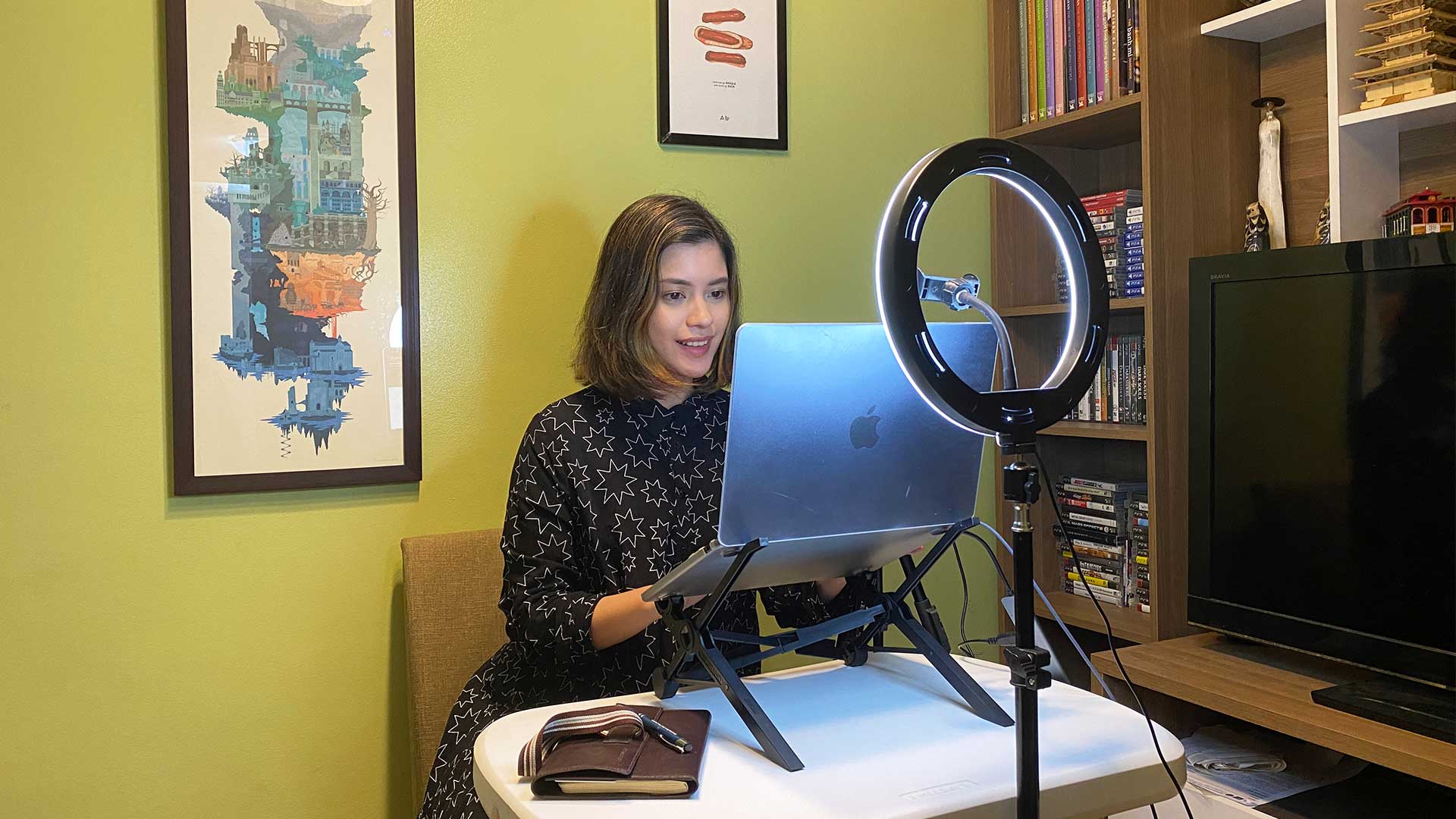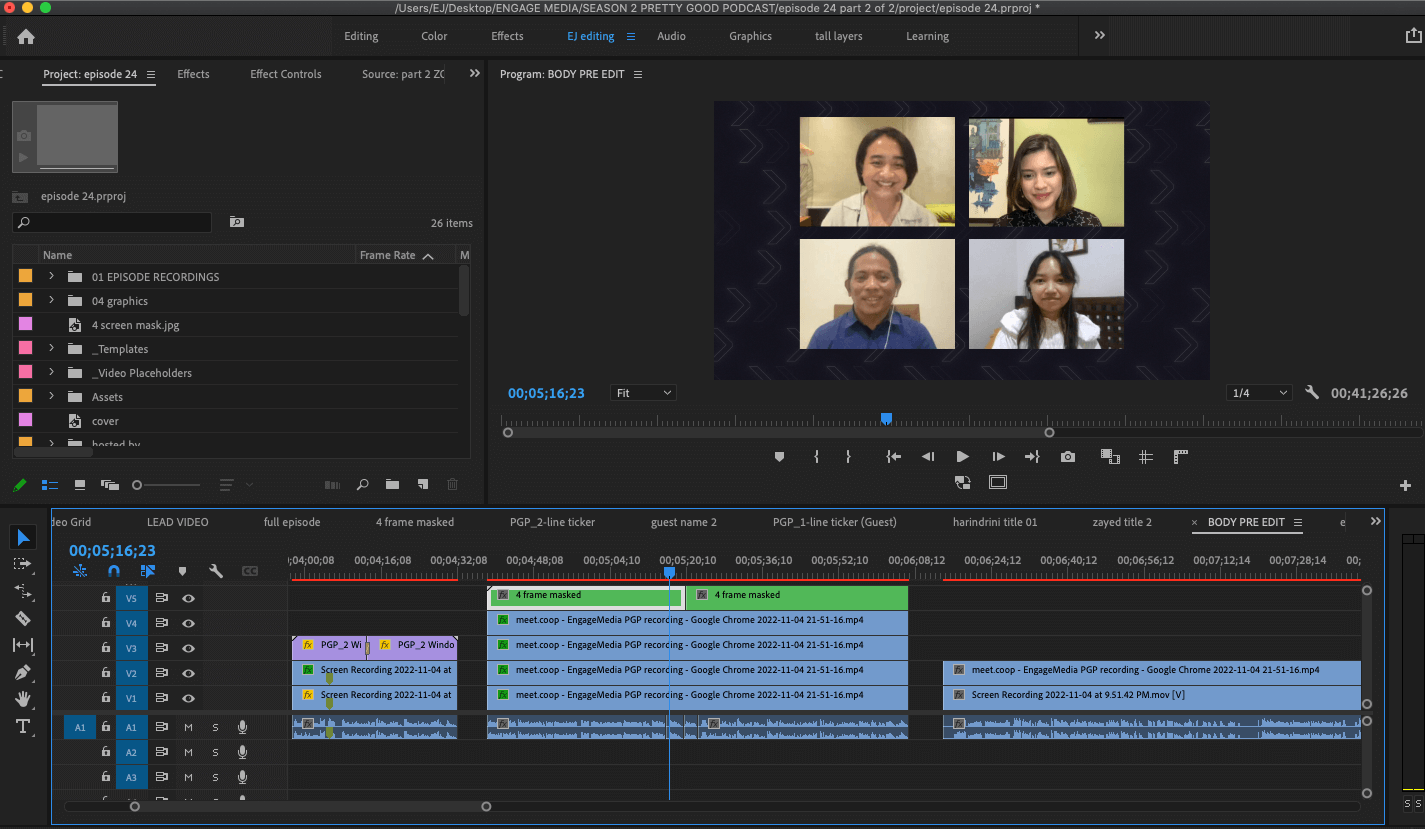In recent years, many organisations are turning to podcasts as a creative way to engage with audiences for their advocacy. For organisations operating globally, podcasts help them connect with groups and individuals from different regions and amplify the voices of the communities they work with. Additionally, podcasts are easy to consume and their production requires little budget and equipment.
Using the right tools and skills, podcasts can be done remotely yet effectively. Interested to start making podcasts yourself? Video4Change Network members Picture People and EngageMedia share six tips on how to build an effective podcast.
1. Know your ‘Why’
When starting a podcast, it is important to know why you are making it in the first place. Knowing your ‘why’ will help you conceptualise the theme and focus of your podcast, identify your audience, and determine the best approach to reach your target listeners. For instance, if you want to amplify the voices of community members, a conversational-style approach centred on a featured guest would suit your podcast. If you want to focus on presenting information, you might opt to go with a narrative or documentary-style format. Plus, by gauging whether you are achieving your ‘why’, you will be able to assess how successful and effective your podcast is.
For both Picture People and EngageMedia, podcasts are effective ways to highlight alternative perspectives and issues that need more attention. Picture People, which trains people to use visual media and technology to effect change, centres the voices of their summer school alumni in the podcast ‘Journeys of Inspiration’. For EngageMedia, Pretty Good Podcast aims to mainstream digital rights issues and amplify different voices from the Asia-Pacific.

(Left) Thumbnail image for EngageMedia’s ‘Pretty Good Podcast’, (Right) Promotional material for Picture People’s ‘Journeys of Inspiration’ podcast
2. Find a workflow that suits you
Different organisations have their own unique workflows. The podcast production team can be a one-man show or a small team composed of a producer and a technical director. Regardless of the setup, everything starts with pre-production: here, you plan who to invite, what the talking points are, your recording and post-production process, and the tools you are going to use.
Research is a key step here as it allows you to prepare both for the content and technical aspects of podcasting. It also helps you define your niche and provide context and nuance around your topic.
Before recording, send your questions to the guest/s and provide opportunities for the host/s to interact with them. Building rapport early is especially important when working remotely – as there is no in-person interaction between the host and guest, it can be challenging to make conversation flow naturally.
Jen Tarnate, producer of EngageMedia’s Pretty Good Podcast, suggests having two guests as this allows for more perspectives on a certain issue, making the discussion more interesting.
Aside from the guests and hosts, podcast editors should also understand the topic so they will be able to make the appropriate editing decisions during the post-production stage, such as knowing when to cut the recording or what to splice. During editing, it is also advisable to edit out dead air so the conversation flows seamlessly. But do so with a light hand, because rough cuts between speakers will feel like an interruption. Strike a balance by listening to the audio and going with your gut feel.
3. Find a quiet place
Audio plays a key role in podcasts, so it is important to be sensitive about sound and ask your guest to find a quiet place during recording. Ensure good audio quality by using earphones and a microphone, and always do a sound check before recording.
Investing in equipment will go a long way if you would like to level up your podcasting. Portable digital recorders such as the Zoom H4n produces good-quality audio.

Pretty Good Podcast host Sara Pacia records in the comfort of her home without the need to rent a studio.
4. Communicate your needs
Recording remotely means you will likely miss non-verbal cues, and there can be issues of lag, audio skipping, and video freezing. Always check your guests’ tech setups prior to recording. Knowing about any technical issues that may arise will give you time to look for solutions.
During the recording, the host and production team will have to find ways to communicate. There are different ways to do this without interrupting the conversation. Hosts of EngageMedia’s Pretty Good Podcast rely on collaborative note-taking to quickly discuss the next steps, shift questions around, and adapt to the flow of the conversation without needing to interrupt the recording.
If you are not recording live, you can pause the recording in between discussions to ensure you have the soundbites you need. You can also ask your guest to repeat his or her answer or elaborate further.
5. Maximise your tools
Free and open-source tools for podcast production are available online, and here is a short guide on how to use them. Maximise your computer’s built-in tools, such as Quicktime. Other useful tools are Zencastr and Otter for transcribing interviews and OBS Studio for editing

A screenshot of the Pretty Good Podcast editor’s workspace during the post-production stage.
6. Plan your outreach and act on feedback
Once your podcast is finished, provide a concise title and description to attract audiences. Think of a catchy title and adopt a tone based on what works best for your audience, which can be formal or conversational.
When promoting your podcast, maximise various social media platforms to reach wider audiences. Tagging your guests and their organisations’ social media handles and using hashtags also help to expand your reach. Word of mouth and targeted outreach is also important. A good practice is to send short, personalised notes to your contacts and ask them to share the podcast with their own networks.
Another tip is to create a content calendar noting down upcoming special occasions or international observances, so you can re-purpose and re-promote your content during these key events.
Lastly, continuously improve your content and treatment by listening to others and garnering feedback from your audience. Podcasts may seem simple enough as a primarily audio format, but creativity does not have a limit, so continue exploring ways to effectively deliver your message!
This blog post is inspired by a Video4Change learning session on remote podcasting conducted in October 2022. There, Picture People’s Christine Clinton shared learnings from ‘Journeys of Inspiration’, a series of short intimate interviews featuring the stories of inspiring professionals around the globe. EngageMedia’s Jen Tarnate, the producer of Pretty Good Podcast, also shared tips on the how-to’s of podcasting.
For questions or feedback, email [email protected].
It’s really great publication for us the young filmmakers.
I love your work I would like to see your next post on camera.